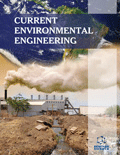Abstract
Objective: We develop a very efficient method for removal of aqueous heavy metal toxic ions by smart nanocomposite materials by adsorption.
Background: Various methods such as ion exchange, nano-filtration, reverse osmosis, and coprecipitation that are used for the removal of aqueous toxic metal ions proved to be expensive, cumbersome and convoluted the condition. Both Graphene Family Materials (GFM) and Layered Double Hydroxides (LDH) have been extensively studied for environment protection for increased user acceptance, and improved overall performance.
Methods: We review problems with noxious and recalcitrant heavy metals present in surface water. We contrast the approach of expensive and cumbersome methods to simple, low cost and eco-friendly ones. We put forward the various 2D-2D nano-composites recently used for effective removal of toxic metal ions substantiated due to anthropogenic activities.
Results: On the basis of these analyses, we propose methods for supporting 2D-2D composites fabricated by surface altercation, crystal lattice defect substitution and intercalation modification by LDH with nanocarbons, carbon nanotubes, graphenic materials, polydopamine and polyaniline are frontrunners in well-organized, proficient and resourceful adsorbents. Finally, we describe the reasons, preparations and work done by LDH carbonaceous materials as fore-front adsorbents for removal of aqueous toxic metal ions from water.
Conclusion: The chemical reactivity and positively charge of LDH and the electrical activity and negatively charge of carbonaceous materials synergistically contributed with large surface area, abundant active sites and compatibility made the sorbent a champion in water remediation.
Application: The present scenario is urgently in need of innovative sorbents with 100% efficiency with fast removal of toxins from water to meet the scarcity of safe water in the coming decade.
Keywords: LDH-GO, LDH-CNT, LDH-g-C3N4, LDH-PANI, adsorption of heavy metals, 2D-2D nanocomposite.
Graphical Abstract
 23
23 3
3

